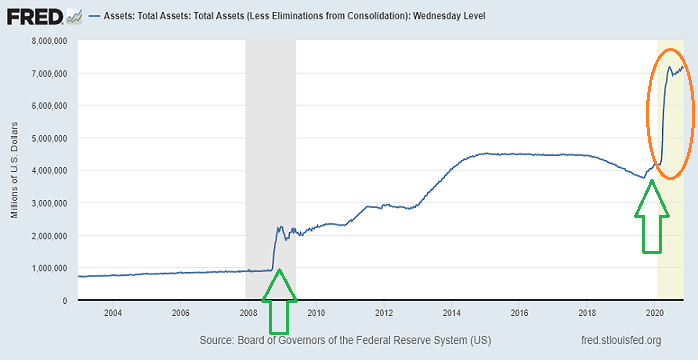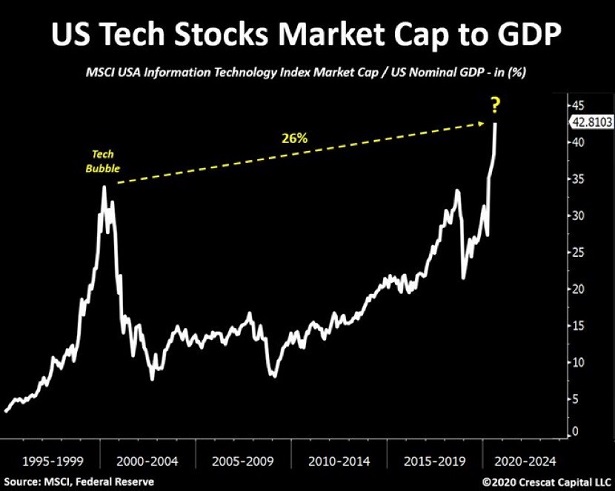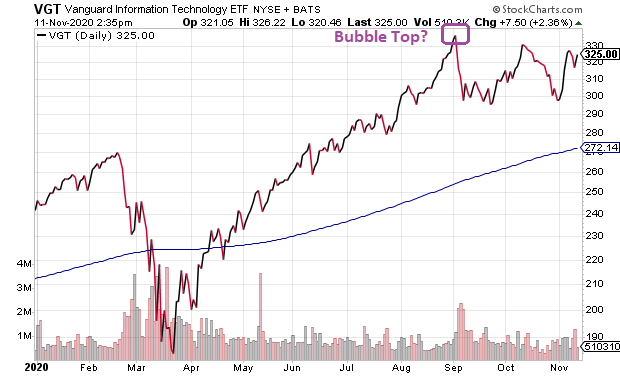Federal Reserve intervention is the reason that stocks defied a protracted bear market in 2020. The central bank of the United States immediately intervened in March, slashing overnight borrowing rates to 0%. The Fed also printed trillions of dollars to buy bonds, pushing prices higher and interest rates lower.
The timing and the size of their actions were critical. In 2008’s Great Financial Crisis, the Fed did not take monumental steps until three-quarters of the way through the recession. In 2020? The Fed acted before the recession even got underway. (See the green arrows below.)

In essence, when the borrowing costs for households and businesses dropped precipitously, everything that involved financing became more attractive. It became cheaper to make a monthly payment on a home or car. It became cheaper for a company to pay interest on debts.
Yet, if the widespread availability of a game-changing vaccine revives the economy, interest rates may climb. Households might not be able to afford the payments on a new home or car. Meanwhile, assets like real estate and stocks might adjust downward to reflect higher rates.
And then there’s this:

The undeniable tech stock bubble has been feasting on the notion that the Federal Reserve will never let rates rise meaningfully. Indeed, the Fed may decide that it must purchase longer-dated bond maturities to maintain rock bottom borrowing costs.
It is worth noting, however, that “tech” has failed to recover its highs from September.

The election uncertainty has dissipated. There’s confidence in a solution to the coronavirus. Nevertheless, “tech” has struggled to break through its ceiling.
Did the tech-heavy Nasdaq “top out” on September 2? If so, the fall from grace could be mighty painful.
Would you like to receive our weekly newsletter on the stock bubble? Click here.
